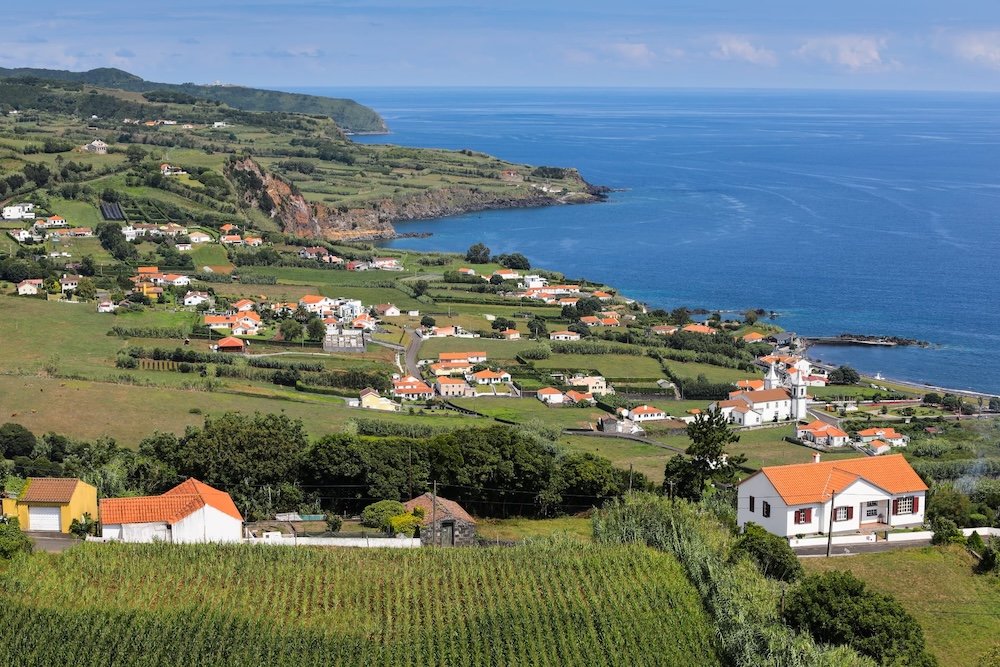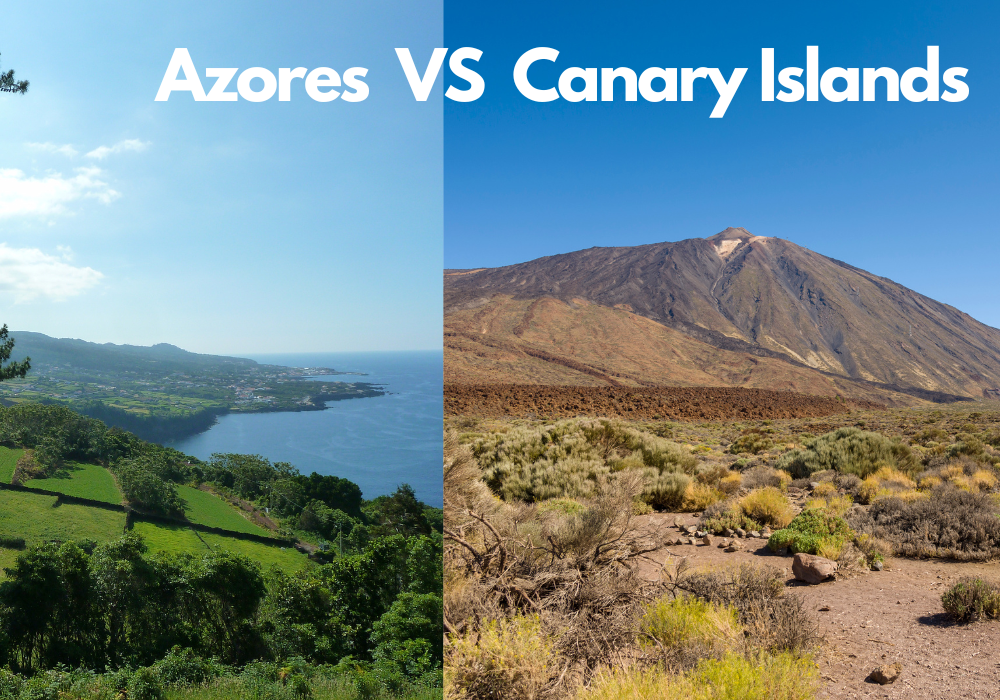
Azores vs Canary Islands – Which is the best island to visit on your next holiday?
When faced with the delightful dilemma of choosing between the enchanting Azores and the captivating Canary Islands, travelers are often caught in a whirlwind of indecision.
Both island groups offer a unique blend of natural beauty, cultural richness, and a variety of activities that can appeal to different types of travelers.
Understanding the unique aspects of each location is crucial in determining which destination could suit your travel needs best.
The Azores, an archipelago in the middle of the Atlantic Ocean, is renowned for its lush, volcanic landscape and a somewhat mystical quality that seems to transport visitors to a world apart.
Farther south, nearer to the coast of Africa, the Canary Islands boast a dramatically diverse terrain, from sandy beaches to arid deserts, attracting sun-seekers and adventure enthusiasts alike.
Choosing the right destination is not just about selecting a travel spot; it’s about crafting an experience that resonates with your personal preferences, whether you’re in pursuit of tranquility or thrill.
This comparison of “azores vs canary islands” aims to guide you through each archipelago’s allure, helping you decide which should be your next adventure destination.
Geographical Overview

Location and Basic Geographical Features
The Azores and the Canary Islands are both splendid archipelagos in the Atlantic Ocean, though they are positioned quite differently and exhibit distinct geographical features.
The Azores are located about 1,500 kilometers west of Portugal, making them a remote, verdant outpost in the midst of the Atlantic.
This group consists of nine volcanic islands, each characterized by dramatic landscapes, rolling hills, and lush greenery, largely due to the frequent mists and fertile volcanic soil.
In contrast, the Canary Islands are situated off the northwest coast of Africa and are part of Spain.
The archipelago consists of seven major islands that are much closer to the African mainland than the Azores are to Europe.
The Canaries are noted for their varied landscapes, which include everything from deserts and volcanic craters to subtropical forests and stunning beaches.
The islands’ proximity to Africa results in a generally warmer and drier climate compared to the Azores.
Differences in the Landscape and Topography
The topographical contrast between the Azores and the Canary Islands is quite striking.
In the Azores, the terrain is predominantly mountainous due to their volcanic origins, with the highest point being Mount Pico at 2,351 meters above sea level on Pico Island.
The islands are marked by craters, lakes, and lush forests, which provide spectacular settings for hiking and nature watching.
Meanwhile, the Canary Islands offer a more diverse range of landscapes.
Tenerife, the largest of the Canaries, hosts Mount Teide, Spain’s tallest peak and the world’s third-largest volcano measured from its base.
This island alone exemplifies the diversity, featuring everything from craggy peaks to moon-like lava fields and ancient forests.
Gran Canaria, another significant island, showcases sand dunes that contrast sharply with the verdant inland valleys and mountainous regions.
This geographical diversity in both archipelagos not only shapes their climates but also influences the activities available to visitors.
Understanding these differences is crucial when comparing “azores vs canary islands” as potential travel destinations. Each offers a unique environment that caters to different types of adventurers and leisure seekers.
Climate and Best Time to Visit
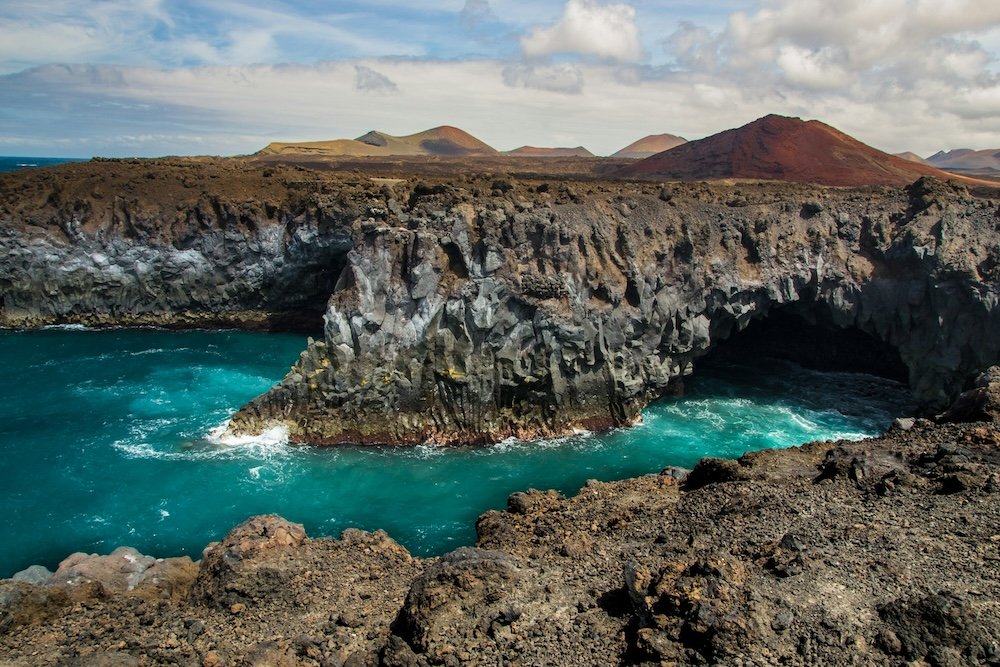
Comparison of the Climate Patterns
The climate of the Azores and the Canary Islands is influenced by their geographic locations and oceanic surroundings, but each archipelago offers distinct weather conditions that appeal to different travel preferences.
The Azores are characterized by a maritime temperate climate, with mild temperatures throughout the year. The weather here is notoriously changeable; it’s often said that you can experience all four seasons in a single day. Summers are relatively cool, with average temperatures around 22°C (72°F), and winters are mild, rarely dipping below 13°C (55°F). The high humidity and frequent rainfall contribute to the lush greenery that defines the islands’ landscapes.
The Canary Islands, being closer to the African mainland, enjoy a subtropical climate that makes them a year-round destination. The weather is generally warmer and drier than in the Azores. Summer temperatures average about 24°C (75°F) but can climb much higher, especially on the eastern islands closer to Africa. Winters are mild and pleasant, with averages around 18°C (64°F). The Canaries are also known for their microclimates; for instance, the northern parts of the islands can be significantly cooler and more verdant than the arid southern areas.
Recommended Times to Visit Based on Weather Conditions
When planning a visit based on the climates of “azores vs canary islands”, timing can significantly affect your experience.
For the Azores, the best time to visit is generally from May to October. During these months, the weather is warmest and there’s less rainfall, making it ideal for outdoor activities like hiking, whale watching, and exploring the natural landscapes. The shoulder months of May and September are particularly appealing for those who prefer to avoid the busier peak season while still enjoying good weather.
In contrast, the Canary Islands are perfect for a visit any time of the year, thanks to their consistently mild temperatures. However, if you prefer warmer weather for beach activities, the best time to go is from May to October. For those who enjoy hiking and exploring nature without the extreme heat, the cooler months from November to April offer comfortable conditions and fewer tourists, making it easier to enjoy the islands’ natural and cultural attractions.
Ultimately, the choice between visiting the Azores or the Canary Islands should consider the specific weather preferences and what you wish to get out of your vacation.
Whether seeking a cool, adventurous escape in the verdant Azores or a sun-filled holiday in the diverse landscapes of the Canary Islands, each archipelago offers distinct advantages depending on the season.
Cultural Highlights

Unique Cultures, Languages, and Historical Influences
Both the Azores and the Canary Islands boast rich cultural heritages shaped by their historical narratives and geographical isolation, each featuring distinctive languages, customs, and influences.
The Azores reflect a deep-rooted Portuguese heritage that permeates every aspect of life, from language to architectural styles. The Azorean culture has been influenced by the various settlers and traders who have passed through the islands over the centuries, including Flemish, Moorish, and Spanish influences. This melting pot of cultures is reflected in the unique traditions and festivals that vary significantly from island to island.
The Canary Islands have a similarly diverse cultural makeup but with a more pronounced Spanish influence, though they also retain elements from their original inhabitants, the Guanches. The islands were an important stop on the Spanish trade routes to the Americas, which introduced a variety of Latin American cultural elements. Today, the Canaries have a vibrant cultural scene that blends Spanish and ancient Guanche practices with African and Latin American influences. The official language is Spanish, but there are also efforts to revive the native Guanche language in some cultural practices.
Local Festivals, Music, and Art Forms
Each island group celebrates its culture through vibrant festivals and artistic expressions that are unique to their historical and cultural backgrounds.
In the Azores, festivals such as the “Festas do Espírito Santo” involve traditional ceremonies and feasts that are held from May through September, showcasing the religious fervor and community spirit of the islands. Music is an essential part of Azorean life, with folk genres using unique instruments like the viola da terra, a type of guitar native to the islands. The Azores also have a rich tradition of handicrafts, including ceramics and weaving, which are vividly displayed during local festivals.
The Canary Islands are famous for their lively festivals, most notably the “Carnival of Santa Cruz de Tenerife,” one of the world’s largest carnival events. The islands’ music scene is vibrant, featuring a mix of Spanish copla and original compositions influenced by Latin American rhythms. Art forms in the Canaries also draw heavily from Spanish and Guanche traditions, with a notable emphasis on woodworking and pottery, which reflect the islands’ aboriginal heritage.
These cultural festivals and artistic traditions provide a colorful backdrop to the “azores vs canary islands” comparison, highlighting the rich cultural tapestry that makes each archipelago unique.
Visitors are encouraged to immerse themselves in these cultural experiences to gain a deeper appreciation of the islands beyond their stunning landscapes and climates.
Natural Attractions
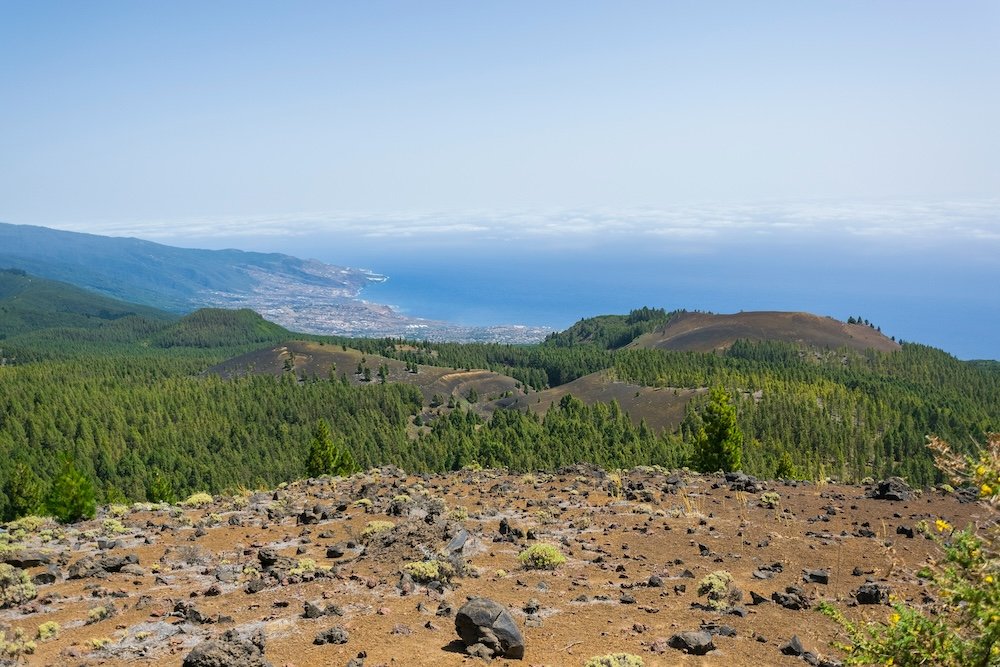
Key Natural Landmarks and Attractions in the Azores
The Azores are a prime destination for nature lovers, celebrated for their volcanic landscapes, lush greenery, and rich marine life. Each island offers its own unique set of natural attractions:
- Volcanic Activity: The Azores sit on the junction of three tectonic plates, resulting in notable volcanic activity. São Miguel, the largest island, is home to the Furnas Valley with its hot springs and geysers. The Capelinhos Volcano on Faial offers a stark, beautiful landscape that tells the tale of its last eruption in 1957.
- Green Landscapes: The archipelago’s subtropical climate and fertile soil allow for dense and diverse vegetation. The Terra Nostra Park, located in the heart of São Miguel, features beautifully manicured gardens around a thermal lake.
- Marine Life: The surrounding waters of the Azores are a hotspot for marine biodiversity. Whale watching is a popular activity, with regular sightings of sperm whales, blue whales, and dolphins. The islands are also a top destination for scuba diving, offering vibrant underwater environments.
Major Natural Highlights of the Canary Islands
The Canary Islands, while known for their beaches, also offer a wealth of other natural attractions that cater to a broad array of interests:
- Beaches: From the golden sands of Gran Canaria to the black volcanic beaches of Tenerife, the islands are renowned for their diverse coastlines. Playa de las Teresitas in Tenerife and Maspalomas in Gran Canaria are among the most famous.
- National Parks: The Teide National Park in Tenerife is a UNESCO World Heritage Site and houses Mount Teide, the highest mountain in Spain. The park’s lunar landscape is a major draw for visitors.
- Deserts: Lanzarote’s Timanfaya National Park offers a stark desert landscape formed by volcanic eruptions. Visitors can tour the park and even experience heat from the geothermal anomalies just below the surface.
These natural attractions highlight the “azores vs canary islands” debate by showcasing the diverse environments each destination offers.
Whether it’s the verdant, volcanic archipelago of the Azores or the varied landscapes ranging from deserts to lush forests in the Canary Islands, nature enthusiasts will find plenty to explore and admire in both locations.
Activities and Things to Do
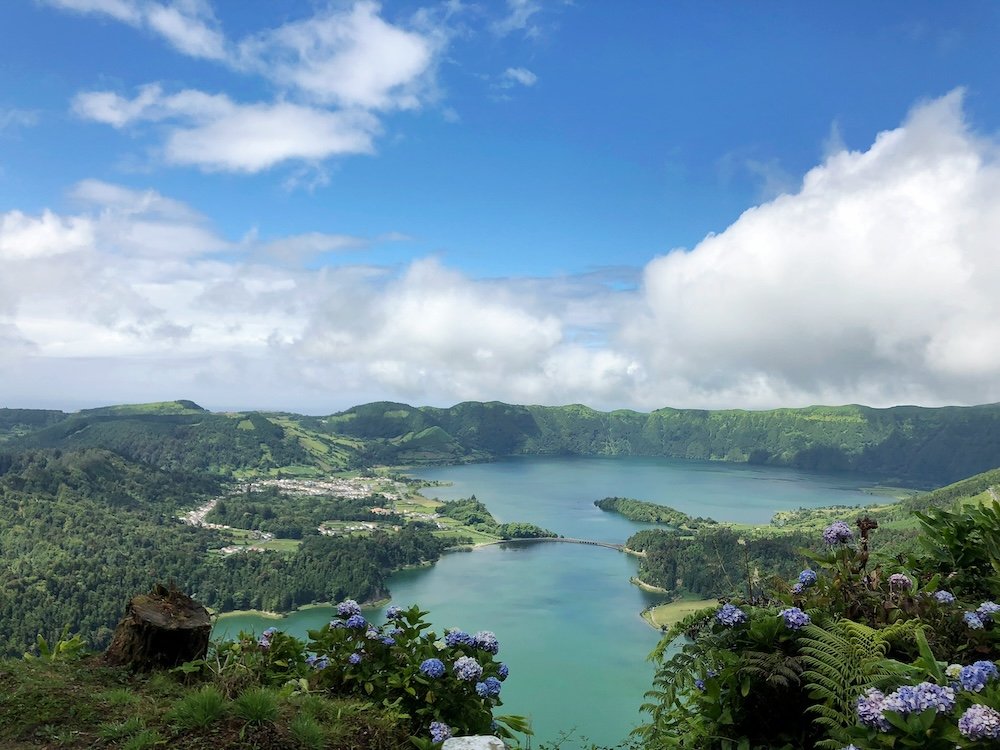
Adventure and Sports Activities
In the Azores, the rugged terrain and rich marine environment provide numerous opportunities for adventure and sports activities. Hiking is a popular pursuit, with trails winding through scenic landscapes such as the Sete Cidades Lake and the Faial Caldera. For water sports enthusiasts, the Azores offer world-class surfing, particularly on the island of São Miguel, and kayaking around the islets of Vila Franca do Campo provides a unique way to experience the area’s natural beauty. The islands are also a premier destination for whale watching and sport fishing, thanks to the abundant marine life in the surrounding waters.
The Canary Islands cater to a wide range of adventure sports and activities. Tenerife and Gran Canaria are hotspots for paragliding, thanks to their ideal wind conditions and stunning aerial views of the coastline and terrain. The clear waters surrounding the islands make for excellent scuba diving and snorkeling spots, with vibrant underwater life and fascinating volcanic rock formations. Hiking enthusiasts can explore the diverse landscapes offered by the islands’ national parks, such as the lunar-like terrain of Timanfaya National Park in Lanzarote or the ancient laurel forests in La Gomera’s Garajonay National Park.
Relaxation and Leisure Options
For those seeking a more relaxing experience, both archipelagos offer ample opportunities to unwind and rejuvenate.
In the Azores, the thermal baths, such as those in Furnas on São Miguel and the natural pools at Ponta da Ferraria, provide a perfect setting for relaxation amidst nature. The islands also boast beautiful botanical gardens and quiet coastal towns like Nordeste, where you can enjoy leisurely walks and absorb the tranquil atmosphere.
The Canary Islands are renowned for their beautiful beaches, which are ideal for relaxation and sunbathing. Tenerife’s Playa de las Teresitas and Lanzarote’s Playa Blanca are perfect for a day under the sun. Additionally, the islands offer numerous spa resorts where visitors can indulge in treatments that incorporate local volcanic stones and mineral-rich waters. Leisure walks along the promenades of Gran Canaria’s Maspalomas or through the quaint streets of La Laguna in Tenerife provide gentle, relaxing activities away from the beach.
Whether you are an adrenaline seeker or looking to unwind, the “azores vs canary islands” comparison shows that both destinations offer a wealth of activities to satisfy diverse tastes and preferences.
From high-energy sports to serene relaxation spots, visitors can tailor their vacation to whatever pace suits them best.
Local Cuisine

Comparison of the Food Scenes
The culinary landscapes of the Azores and the Canary Islands are as rich and varied as their natural and cultural environments, offering a delightful exploration of tastes for any food lover.
The Azores cuisine is heavily influenced by the archipelago’s volcanic soil and maritime location, which contribute to the abundance of fresh produce and seafood. The local food is generally simple but flavorsome, heavily reliant on ingredients like fish, beef, and dairy products produced on the islands. Traditional cooking methods often involve slow-cooking or stewing, capturing the depth of flavors in each dish.
The Canary Islands also boast a vibrant food scene, with a greater emphasis on spices, reflecting their historical trade routes and proximity to Africa. The cuisine here combines traditional Spanish recipes with African and Latin American influences, resulting in a unique blend of flavors. Potatoes, seafood, and tropical fruits feature prominently, along with the use of mojo sauces to add zest and color to dishes.
Must-Try Dishes and Local Delicacies
In the Azores, one cannot miss the opportunity to try “Cozido das Furnas,” a stew that is slow-cooked underground by volcanic steam. This dish typically includes a mix of meats, sausages, and vegetables, all infused with a subtle smokiness. Seafood lovers should sample “cracas,” a type of shellfish that is unique to the region, and the grilled limpets, which are a common sight on local menus. For cheese aficionados, São Jorge Island’s cheese, with its spicy, intense flavor, is a must-try.
In the Canary Islands, “papas arrugadas” (wrinkled potatoes) served with mojo sauce is an iconic dish that reflects the simplicity and rusticity of the local cuisine. The islands’ varied seafood offerings, such as “vieja,” a type of parrotfish, present a fresh taste of the local waters. For those with a sweet tooth, “bienmesabe,” a sweet almond cream from the island of La Palma, offers a delightful dessert option. Another notable dish is “goat stew,” a rich and hearty meal that showcases the islands’ meat-cooking traditions.
Each destination’s cuisine offers a window into its culture, environment, and history, making dining an integral part of the travel experience when comparing “azores vs canary islands.” Whether you’re indulging in the hearty, volcanic earth-infused dishes of the Azores or the spicy, diverse flavors of the Canary Islands, the local cuisine will enhance your understanding and appreciation of these unique island destinations.
Accommodation Options
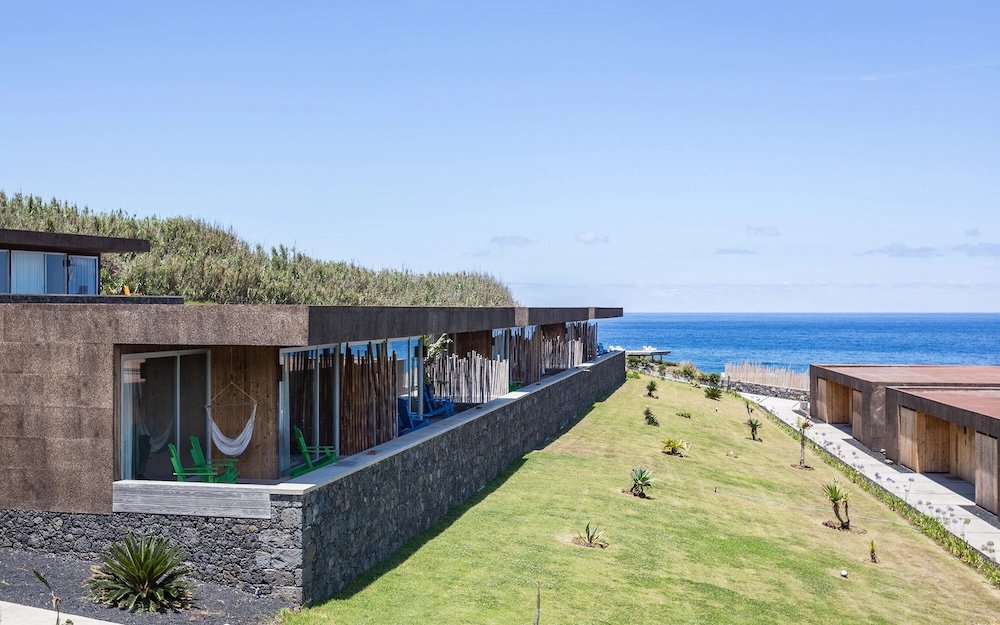
Overview of Typical Accommodations
Both the Azores and the Canary Islands cater to a wide range of tourists with diverse accommodation options suited for varying budgets and preferences.
In the Azores, accommodations range from charming bed and breakfasts to luxury hotels. The islands also offer a number of eco-retreats and boutique hotels that emphasize sustainable tourism, allowing guests to stay in unique settings like converted manor houses or contemporary accommodations that blend into the natural landscape. For budget travelers, there are numerous hostels and guesthouses that provide comfortable yet affordable lodging options.
The Canary Islands provide an extensive selection of accommodations, from high-end resorts to budget-friendly apartments. The islands are particularly well-known for their resort complexes, which offer comprehensive amenities including spas, pools, restaurants, and entertainment activities, catering especially to families and couples. For those seeking a more authentic experience, rural cottages and historic hotels are available, particularly in more remote areas like La Gomera and El Hierro.
Distinctive Lodging Experiences Unique to Each Location
The Azores offer some unique lodging experiences that make the most of the islands’ stunning natural settings. One of the distinctive options is the “Quinta,” traditional Azorean farmhouses that have been converted into guest accommodations. These often come with sprawling gardens and are situated in picturesque areas that showcase the beauty of the Azorean landscape. Another unique option is staying in a volcanic stone house, offering a rustic yet cozy ambiance that complements the islands’ volcanic terrain.
The Canary Islands also boast unique accommodations that reflect their diverse landscapes and cultural heritage. In Lanzarote, for example, visitors can stay in cave rooms or eco-friendly yurts that provide an immersive experience in the island’s stark volcanic landscapes. Tenerife offers colonial-style mansions converted into luxury hotels, where guests can enjoy historic architecture with modern comforts. Additionally, the islands have several adult-only hotels, providing a serene and sophisticated atmosphere for couples and solo travelers.
Whether you’re looking for luxury resorts with all the amenities, distinctive lodges that offer a deep connection to nature, or budget accommodations that provide basic comforts, both “azores vs canary islands” present a variety of options that can enhance your travel experience, catering to every taste and need.
Travel Practicalities

Entry Requirements and Travel Logistics
When planning a trip to either the Azores or the Canary Islands, understanding the entry requirements and logistics is essential for a smooth experience.
For the Azores, as part of Portugal, entry requirements for tourists generally align with those of the Schengen Area. EU citizens can enter freely with an ID card, while non-EU travelers will typically need a passport and may require a Schengen visa depending on their nationality. Direct flights to the Azores are available from major European cities, and there are also flights from North America. Once on the islands, inter-island flights and ferries are the most common ways to travel between the islands, along with car rentals for exploring each island.
The Canary Islands, being a Spanish territory, follow similar entry rules to the mainland. EU citizens can enter with an ID card, and non-EU citizens need a passport, with some requiring a visa. The islands are well-connected by air with Europe and have excellent flight connections between the islands and to mainland Spain. Travel between the islands is facilitated by a robust network of ferries and local flights, and like the Azores, car rentals are available and often recommended for convenience.
Tips on Language, Currency, and Local Customs
Language: In the Azores, Portuguese is the official language, and while English is widely spoken in tourist areas, learning some basic Portuguese phrases can enhance your interactions with locals. In the Canary Islands, Spanish is the official language, with English and German also commonly spoken in tourist locations. As with the Azores, picking up some Spanish phrases can be beneficial.
Currency: Both the Azores and the Canary Islands use the Euro (€) as their currency. Credit cards are widely accepted, but carrying some cash is advisable for smaller transactions, especially in more remote areas.
Local Customs: In both archipelagos, a relaxed and polite approach is appreciated in social interactions. Dressing modestly outside beach areas is recommended, and tipping is customary, similar to mainland Portugal and Spain—usually around 10% in restaurants and bars if service charges are not included.
Additionally, both destinations have unique cultural practices that are worth respecting and participating in if given the opportunity.
In the Azores, embracing the local festivals can provide deeper insight into the Azorean way of life.
In the Canary Islands, engaging with the local tradition of ‘paseo’—a leisurely evening walk—can be a delightful way to experience local life.
Understanding these practicalities will ensure that your visit to either “azores vs canary islands” is not only enjoyable but also respects the local norms and customs, making for a harmonious and enriching travel experience.
Cost Comparison

General Cost of Visiting
The overall cost of visiting the Azores compared to the Canary Islands can vary significantly depending on the time of year, type of accommodations, and personal spending habits.
However, some general trends can be observed.
The Azores tend to be slightly more expensive than the Canary Islands in terms of daily expenses. This is partly due to their more remote location, which affects the cost of goods and services.
Dining out, for instance, may be pricier, and car rentals can also cost a bit more.
However, accommodations range widely, and there are options to fit smaller budgets, especially outside the peak tourist season.
The Canary Islands generally offer more budget-friendly options, especially for accommodations and dining, thanks to the larger scale of tourism and the competitive nature of the market there.
The cost of activities and transportation is also generally lower than in the Azores.
That said, prices can rise significantly in high-demand areas and during peak seasons, such as the European winter months when the islands see a surge in visitors seeking warmer climates.
Tips on Budgeting and Managing Expenses
For the Azores:
- Travel Off-Peak: Consider visiting in the shoulder seasons (early spring or late autumn) when flights and accommodations are less expensive.
- Self-Catering Accommodations: Opt for accommodations with kitchen facilities to save on meals.
- Explore Nature: Take advantage of the abundant natural attractions, many of which are free or have very low entry fees.
For the Canary Islands:
- Book in Advance: Especially for travel during peak seasons, booking flights and accommodations well in advance can lead to significant savings.
- Public Transportation: Utilize the extensive public transport network, especially the buses, which are cost-effective and service most major tourist destinations.
- Eat Like a Local: Avoid tourist traps and eat where the locals do; the Canaries offer excellent local eateries that are more affordable than the typical tourist spots.
Both destinations offer a range of activities and experiences that can suit various budgets.
By planning ahead, being mindful of peak tourist seasons, and making thoughtful choices about where to eat and stay, travelers can manage costs effectively while still enjoying the unique offerings of either the Azores or the Canary Islands.
Whether you choose the remote, lush landscapes of the Azores or the vibrant, diverse settings of the Canary Islands, there are ways to explore these beautiful locations without overspending.
Pros and Cons

Advantages and Drawbacks of Each Destination
The Azores:
Pros:
- Natural Beauty: The Azores are famed for their stunning landscapes, from volcanic craters and lush forests to beautiful coastlines. This makes them ideal for nature lovers and those seeking tranquility.
- Unique Activities: Activities such as whale watching, hot springs, and hiking through unique volcanic scenery offer experiences that are difficult to find elsewhere.
- Less Crowded: Being less commercialized than many popular tourist destinations, the Azores provide a more relaxed and intimate experience.
Cons:
- Weather Variability: The weather can be unpredictable, with possibilities of experiencing multiple seasons in a day, which might not appeal to those seeking constant sunshine.
- Higher Costs: Due to their remote location, some goods and services, including dining and transportation, can be more expensive.
- Limited Nightlife: The nightlife in the Azores is relatively subdued, which may be a downside for those looking for vibrant evening entertainment.
The Canary Islands:
Pros:
- Diverse Activities: From beaches and national parks to museums and historic sites, the Canary Islands offer a wide array of attractions catering to all ages and interests.
- Year-Round Pleasant Weather: The islands enjoy a subtropical climate, making them a perfect winter getaway for those seeking sunshine and warmth.
- More Accommodation Options: A broader range of lodging options suits all budgets, from luxury resorts to affordable vacation rentals.
Cons:
- Tourist Crowds: Some parts of the Canary Islands can become quite crowded, especially during peak travel seasons, which might detract from the experience for those seeking solitude.
- Commercialization: Higher levels of tourism development might feel less authentic to those seeking a more cultural travel experience.
- Environmental Concerns: Popular tourist spots may face environmental pressures, and visitors may need to be more conscious of their ecological impact.
Personalized Advice on Choosing Based on Travel Style and Preferences
When deciding between the Azores and the Canary Islands, consider what aspects of a vacation are most important to you:
- Nature and Solitude: If you’re a nature lover who prefers quiet and less crowded environments, the Azores might be more suitable. The islands offer a peaceful retreat with stunning natural landscapes and opportunities for wildlife observation and outdoor activities.
- Sun and Variety: If you prefer guaranteed sunshine and a wide range of activities, from beach-going to hiking and cultural tours, the Canary Islands would be a better choice. The islands cater to both relaxation and adventure seekers with reliable weather and extensive tourist facilities.
- Cultural Experiences: For those interested in experiencing a mix of cultures influenced by European and African elements, the Canary Islands offer a vibrant cultural scene. Meanwhile, the Azores provide a deeper dive into Portuguese maritime heritage and island-specific traditions.
- Budget Considerations: If budget is a concern, the Canary Islands might offer more affordable options in terms of accommodation and dining, thanks to their more developed tourism industry and competition.
Ultimately, whether you choose the “azores vs canary islands” depends on what you hope to get out of your vacation—whether it’s adventure, relaxation, cultural immersion, or simply a break in a beautiful locale.
Each destination offers unique attractions and experiences that can cater to different preferences and styles.
Conclusion
Choosing between the Azores and the Canary Islands for your next vacation destination involves considering various factors, each playing a crucial role in shaping your ultimate decision.
Both archipelagos boast unique attractions, from the lush, verdant landscapes of the Azores to the sun-soaked, diverse terrains of the Canary Islands.
However, your personal preferences and vacation goals are key in determining which destination is ideally suited for your first visit.
If your ideal getaway includes serene environments, rich marine life, and a chance to connect deeply with nature away from the bustling crowd, then the Azores should be your choice.
The islands offer a tranquil escape where the beauty of unspoiled nature takes center stage, perfect for those seeking relaxation or adventurous activities in a less commercialized setting.
On the other hand, if you are looking for a vibrant holiday with a variety of leisure and adventure options, constant warm weather, and extensive amenities, the Canary Islands might be the better first stop.
These islands not only provide beautiful beaches and a plethora of activities but also cater to a broad spectrum of travelers, ensuring that everyone—from families to solo adventurers—finds something enjoyable.
When deciding whether to visit the “azores vs canary islands” first, reflect on what aspects of a vacation are most important to you.
Consider factors like climate preferences, desired activities, budget, and the type of cultural experiences you wish to have.
Both destinations offer a compelling array of attractions and experiences, but aligning your choice with your personal vacation goals will ensure a more fulfilling and memorable trip.

FAQ’s About Azores vs Canary Islands:
What Is the Best Time of Year to Visit the Azores and the Canary Islands?
The best time to visit the Azores is from May to October when the weather is warmer and drier, making it ideal for outdoor activities like hiking and whale watching.
The shoulder months of May and September offer the added benefit of fewer tourists and mild weather.
For the Canary Islands, you can visit any time of the year thanks to their mild subtropical climate.
However, if you prefer warmer weather suitable for beach activities, the months from May to October are optimal.
Those looking to avoid the crowds while enjoying cooler temperatures might prefer visiting from November to April.
Are the Azores or the Canary Islands Better for a Family Vacation?
The Canary Islands are generally better suited for family vacations, thanks to their wide range of activities and amenities designed to cater to visitors of all ages, including children.
The islands feature numerous resorts with family-oriented services, beaches with calm waters, and attractions like water parks and zoos.
The Azores also offer a family-friendly environment, especially for families interested in nature and outdoor activities.
However, the entertainment options specifically geared towards children are less abundant compared to the Canary Islands.
Can You Easily Island Hop in the Azores and the Canary Islands?
Island hopping is feasible and quite enjoyable in both archipelagos, but the experience differs between the two.
In the Azores, the islands are spread out over a larger area of the ocean, and while there are flights and ferries connecting them, the schedules can be less frequent, and the travel time longer.
It’s a fantastic way to see diverse landscapes and ecosystems, but it requires careful planning.
In the Canary Islands, island hopping is more straightforward due to the close proximity of the islands to each other and the more frequent ferry services and flights.
This makes it easier for visitors to explore multiple islands during a single trip, even on shorter stays.
What Are Unique Cultural Aspects of the Azores and Canary Islands?
The Azores are rich in Portuguese maritime culture, with unique local traditions such as the “Festas do Espírito Santo,” which involve elaborate feasts and ceremonies.
The music, crafts, and cuisine reflect a blend of indigenous and European influences.
The Canary Islands display a mix of Spanish and ancient Guanche cultures, with Latin American influences visible in their music and festivals.
The Carnival of Santa Cruz de Tenerife is one of the most significant and vibrant celebrations, showcasing elaborate costumes and parades.
How Do Dining Experiences Differ Between the Azores and the Canary Islands?
Dining in the Azores typically involves simple, locally sourced ingredients prepared in traditional Portuguese styles.
Seafood and beef are staples, and there is a strong emphasis on soups, stews, and cheeses.
In the Canary Islands, the cuisine features a blend of Spanish dishes with African and Latin American influences.
The use of spices and mojo sauces adds a distinctive flavor to their meals, which often feature a variety of seafood, potatoes, and tropical fruits.
